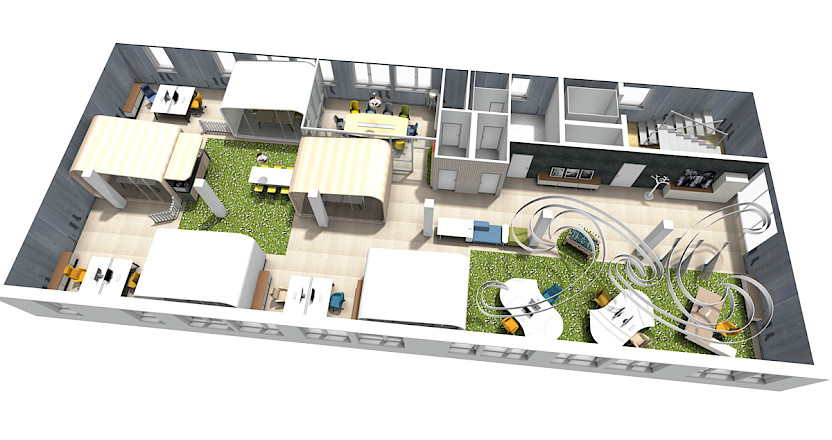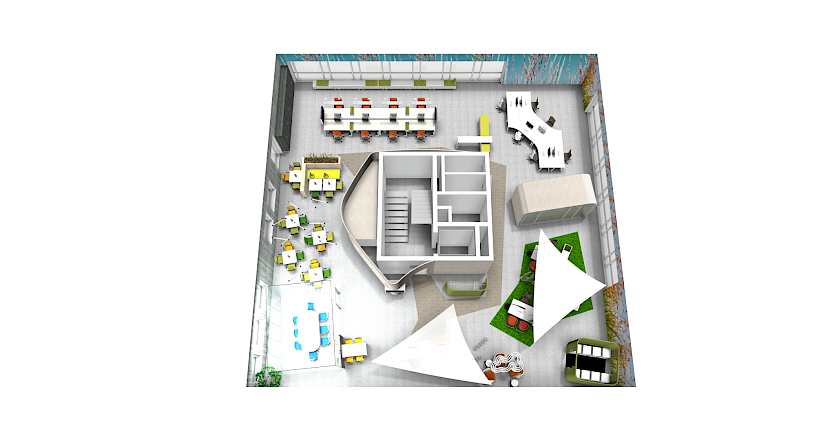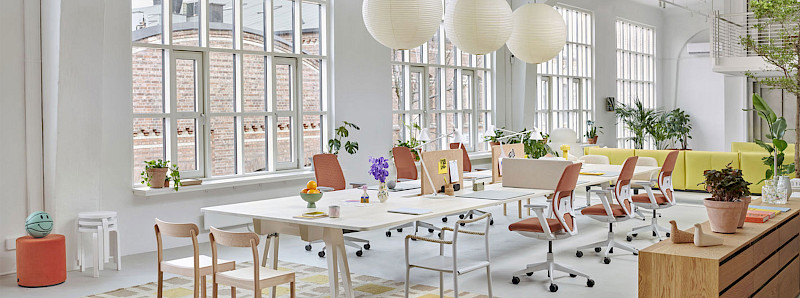Modern open-plan offices (Open Space) are not a standalone office type but usually a combination of different workspace zones. These combine various areas for work and communication, allowing employees to choose the environment that best suits their current task or activity.



Advantages of Modern Open-Plan Offices
- Avoids monotony through varied spatial design
- Flexibility in organising workflows
- Excellent integration of different working styles
- Possibility to create dedicated zones for focused work and various types of communication
Disadvantages of Modern Open-Plan Offices
- Störungsfreies Arbeiten meist nur in Teilbereichen möglich
- Zumindest in Teilbereichen relativ hoher Geräuschpegel
- Fehlendes Tageslicht in den zentralen Bereichen
- Hoher Aufwand für Klimatisierung
- Klima und Licht nicht oder nur in Teilbereichen individuell regulierbar
- Höhere Anforderungen an den Brandschutz bei einer Grundfläche von > 400 m²
According to ASR A1.2, the following minimum space requirements apply when designing open-plan office landscapes:
- Open-plan areas: 12 to 15 m² per workstation
- Cellular offices: 8 to 10 m² per workstation
Regardless of the office type, only rooms may be used that provide at least 8 m² for one workstation, plus 6 m² for each additional workstation. In addition, each employee must have at least 12 m³ of air volume.
(Note: These requirements do not apply to meeting and training rooms.)
Our tip: You’ll find design ideas for all Open Space zones in the showrooms of the IBA Forum.
The cover image of this article is taken from the showroom of the office furniture brand VS.





